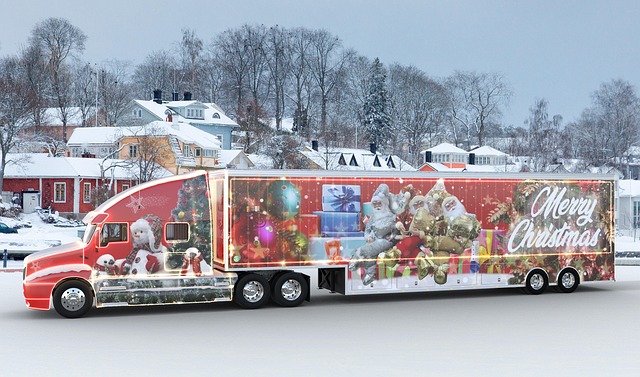Looking to register your car in California? This comprehensive guide walks you through the entire process, from understanding key requirements to securing your vehicle’s unique VIN verification. We’ll detail the essential documents needed for a successful visit to the DMV and provide step-by-step instructions on completing the application form accurately. Learn how to pay registration fees and receive your official license plate, ensuring your California road adventures begin smoothly. Don’t forget to explore our tips for passing the dmv vin verification process.
- Understand California Car Registration Requirements
- Gather Necessary Documents for DMV Visit
- Perform VIN Verification: Steps & Process
- Complete Application Form Accurately
- Pay Registration Fees and Receive Your Plate
Understand California Car Registration Requirements

Before registering your car in California, it’s crucial to understand the state’s specific requirements. The California Department of Motor Vehicles (DMV) mandates several steps for car registration, including a thorough vehicle inspection and verification of the vehicle identification number (VIN). This process ensures that all vehicles on California roads meet safety and emission standards.
One key component is the DMV VIN verification, which checks the VIN’s validity and matches it against the vehicle’s make, model, and year. Additionally, you can opt for a mobile vin inspection or use a mobile vin verifier to streamline this process. These services provide convenient alternatives to traditional inspections, making it easier for California residents to meet registration deadlines and comply with state regulations.
Gather Necessary Documents for DMV Visit

Before heading to the California DMV, ensure you have all the essential documents for a smooth registration process. The primary requirement is proof of vehicle ownership, typically in the form of a valid certificate of title or “title” document. This certifies that you are the legal owner of the car. Another crucial piece is your driver’s license, as well as any applicable identification documents, such as proof of residency (like a utility bill).
For a faster and more efficient process, consider bringing along a completed DMV Form 137, Application for Title or Registration, which you can obtain online. Additionally, a valid vehicle inspection report, like those provided through mobile vin verification services, is necessary to prove that your car meets safety and emissions standards. A mobile vin verifier can offer a convenient and quick way to get this crucial document, making your DMV visit even easier.
Perform VIN Verification: Steps & Process

To begin the car registration process in California, performing a Vehicle Identification Number (VIN) verification is a crucial step. This process ensures that your vehicle matches the information on record and helps prevent fraud or theft. The Department of Motor Vehicles (DMV) offers two main methods for VIN verification: visiting a DMV office or utilizing a mobile vin inspection service.
For a traditional DMV vin verification, you’ll need to visit a local California DMV branch with the required documents and your vehicle. Alternatively, many companies now offer mobile vin verifier services, allowing you to complete the process remotely. These services utilize advanced technology to perform a thorough check, ensuring accuracy. Whether in-person or via a mobile vin inspection, this step is vital to streamlining the car registration experience and confirming your vehicle’s legitimacy.
Complete Application Form Accurately

To ensure a smooth car registration process in California, it’s crucial to complete the Application Form accurately and thoroughly. This form requires precise information about your vehicle, including its make, model, year, and unique identifier—the Vehicle Identification Number (VIN). Accurate VIN input is essential for successful DMV VIN verification, which is a critical step in the registration process.
A mobile vin verifier or mobile vin verification tool can be handy here. These services allow you to quickly and conveniently capture your vehicle’s VIN, ensuring accuracy. Moreover, having correct details from the outset reduces potential delays and errors during inspection, including vin inspection.
Pay Registration Fees and Receive Your Plate

After completing your vehicle’s registration application, it’s time to settle the fees. The California DMV charges a standard registration fee that covers the cost of licensing and plate issuance. This fee varies based on your vehicle type, so ensure you check the official DMV website or consult a representative for the most current rates. You can typically pay online, by phone, or in person at any DMV field office.
Once your payment is processed, the California DMV will conduct a VIN (Vehicle Identification Number) verification to ensure the vehicle’s authenticity and compliance with regulations. This process includes checking the vehicle’s history and identifying potential issues. With successful verification, you’ll receive your license plate, which often features unique combinations of letters and numbers. These plates serve as official markers of your vehicle’s registration and must be displayed prominently on both sides of the car for legal identification during operation on California roads.
Registering a car in California involves understanding clear requirements, gathering essential documents, and completing crucial steps like VIN verification through the DMV. By accurately filling out application forms, paying the necessary fees, and adhering to these guidelines, you can ensure a smooth process for getting your vehicle’s registration and license plate. Remember, a properly registered car is not only legal but also enhances safety on California’s roads.
